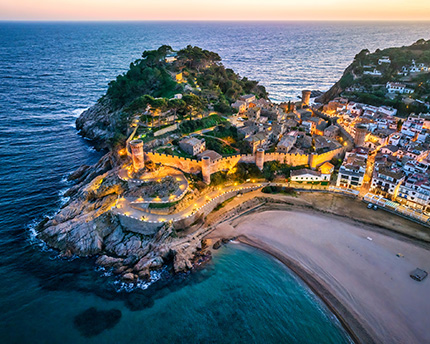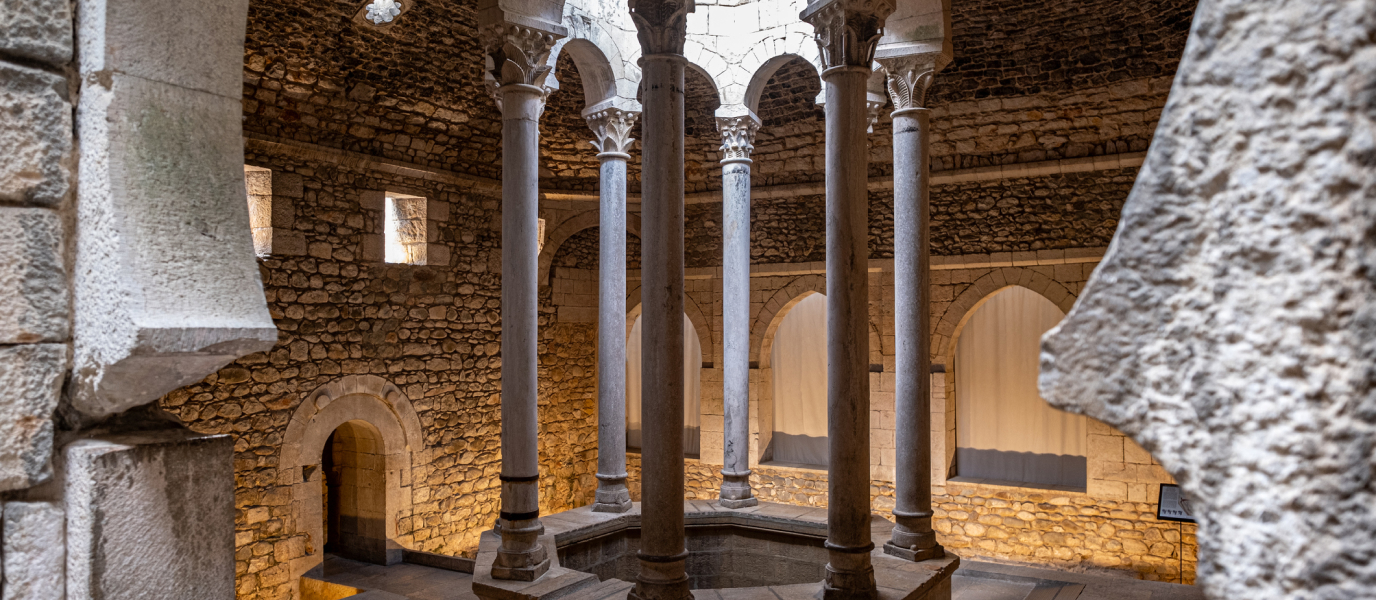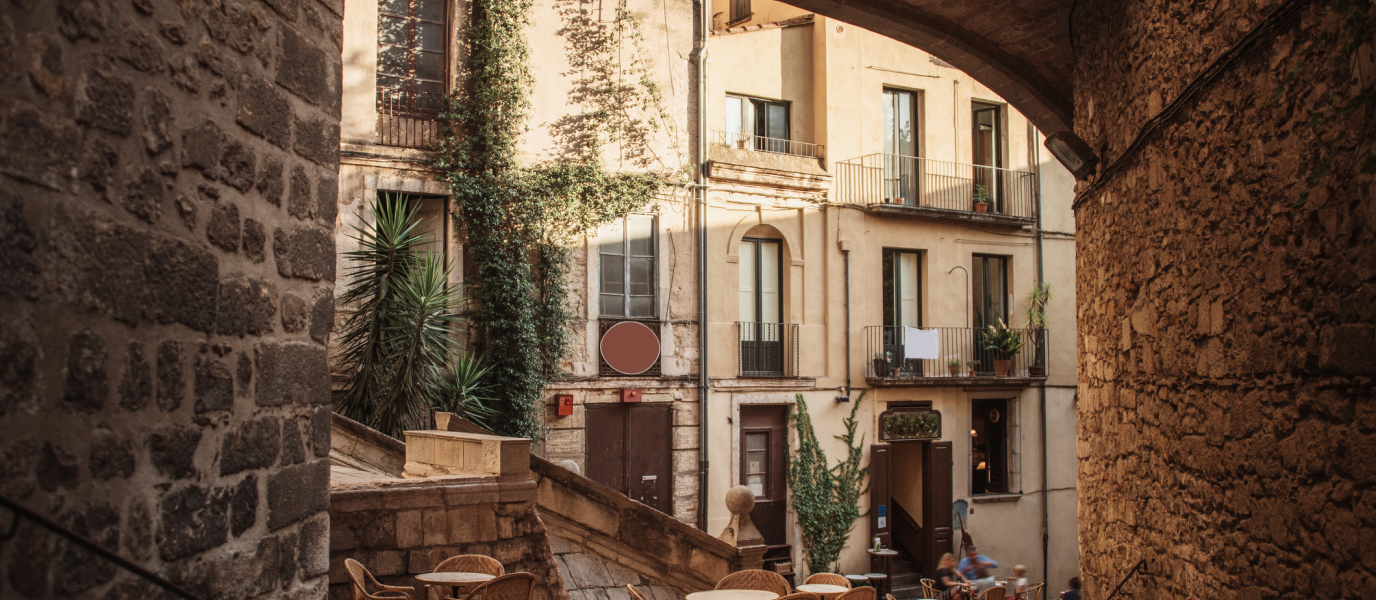The Fageda d’en Jordà is a protected natural area that forms part of the Garrotxa Natural Park (link to the corresponding URL?), which is undoubtedly one of the most impressive landscapes of the inland part of the province of Girona. Its main attraction from a natural and scenic point of view is that it’s an impressive beech forest located on a flow of lava formed between 10,000 and 1,500 years ago, which is relatively flat and surrounded by several volcanic craters.
It’s an ideal place for hiking, which we recommend visiting with children, as the routes have varying degrees of difficulty and lengths depending on the physical fitness of each hiker.
Natural surroundings of the Fageda d’en Jordà
From a natural standpoint, the most striking feature of the Fageda d’en Jordà is its location, at an altitude of some 550 metres, but situated on relatively flat terrain next to which rise several dormant volcano cones. Petrified lava protrusions, called tossols, occasionally emerge in this space from time to time, some of which rise up to 20 metres.
It’s here, nourished by the mineral richness provided by lava over a thousand years old, that the beech trees that make up the Fageda d’en Jordà forest (“fageda” means beech forest, hence the name) have found their ideal habitat. Some of them reach 30 metres in height and are a rarity in the Iberian Peninsula, where this type of tree rarely grows below an altitude of 900 metres.
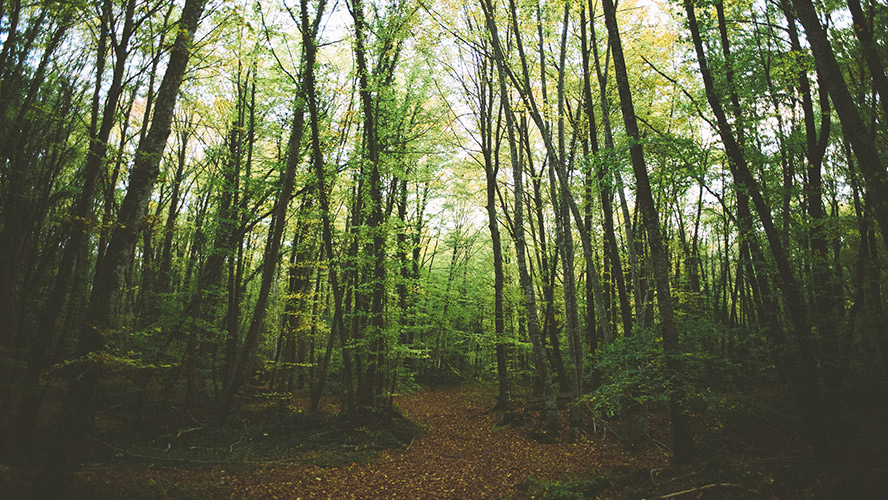
Flora and fauna
The leaves that fall every autumn from the beech trees of the Fageda d’en Jordà, together with the mineral nutrients provided by the lava as it decomposes over time, have created the ideal, almost magical terrain on which many plant and animal species live.
The plant life features low shrubland and different types of grass and trees, such as holm oaks. There are also such eye-catching floral species as the wood anemone (Anemone nemorosa), liverwort, common blue violet, and green hellebore.
In terms of fauna, the Fageda is home to mammals such as the wild boar, wildcat, marten, genet, and dormouse, like other areas of the Garrotxa Volcanoes Natural Park.
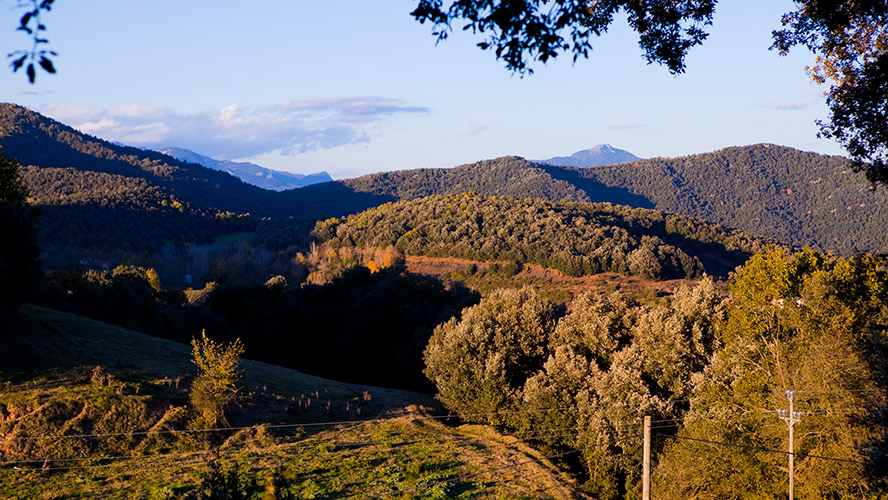
Hiking and trails in the area
This circular route starts from the Information Centre in the Can Serra area and is around 12 kilometres long, which, depending on how fit the participants are, can be completed in around four and a half hours.
Itinerary 1, up to the Santa Margarida and Croscat volcanoes
Esta ruta circular parte desde el Centro de Información del área de Can Serra y tiene unos 12 kilómetros que, en función de la forma física de los participantes, se pueden cubrir en unas cuatro horas y media.
Itinerary 2, through the beech forest
This route, which is only 1.5 kilometres long, is ideal for those who don’t want to or can’t make a great physical effort but would like to explore the beautiful beech forest. It can be done in just over half an hour, pausing to admire the beauty of the surroundings. This itinerary is also known as the Joan Maragall Trail, in homage to this Catalan poet, who wrote a poem highlighting the outstanding features of this place.
Itinerary 3, from Olot to the Fageda d’en Jordà
This is an out-and-back route of just ten kilometres in length, ideal for those who want to enjoy nature to the fullest and forget about taking a car. The total time of the route is about two hours and 45 minutes and part of it runs along the rural road.
Activities and experiences
Hiking and nature watching aside, one of the most popular and sought-after activities is touring the Fageda d’en Jordà in a horse-drawn carriage. The starting point is the Can Serra car park, and the route lasts just over an hour, with a section on foot during which the carriage driver provides detailed explanations about this natural space.
The visit to La Fageda farm, located in the surroundings of the protected area is very popular, especially with families with children. Here, young and old alike can learn all about the production of cow’s milk and the other foodstuffs produced here.
And the church located inside the crater of the Santa Margarida volcano is a very interesting sight. It dates from the mid-19th century, although it’s a reconstruction of a temple that already existed in the 12th century, twice destroyed by earthquakes, which houses a venerated Romanesque carving of the Virgin.
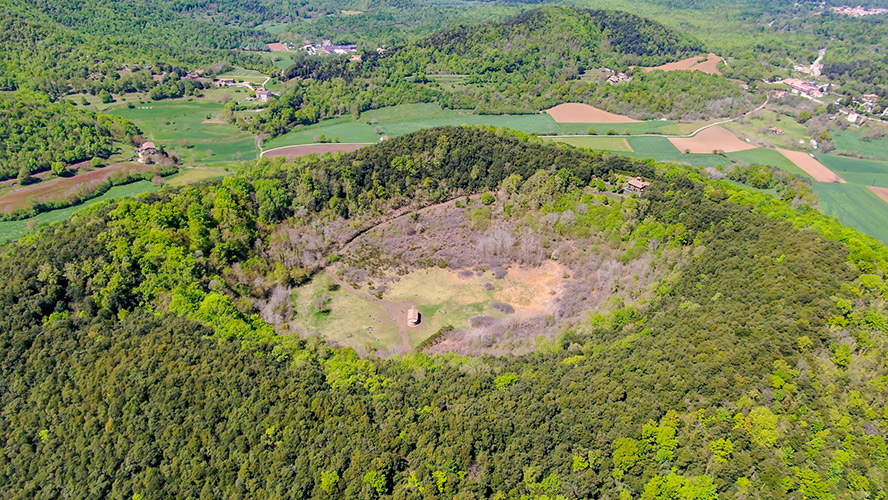
Visit to the Information Centre
The Fageda d’en Jordà Information Centre is located at the Can Serra access point, next to the road from Olot to Santa Pau. Visitors, who can visit it from February onwards (it’s closed in winter) and only in the mornings, will find everything they need to make their visit to the nature reserve as informative and safe as possible. Among other services, they offer detailed information about the various trails and the area’s natural heritage, as well as advice on how to make visits more pleasant and environmentally friendly.
Three of the most popular trails start from here, known by the number assigned to them by the park authorities: itineraries 1, 2, and 3, which together cover this protected area’s most characteristic landscapes and ecosystems.
This is also where the monitoring of the area takes place and where the groups visiting the Croscat volcano leave from. There’s an exhibition on this volcano in the Information Centre, which is open to all visitors.
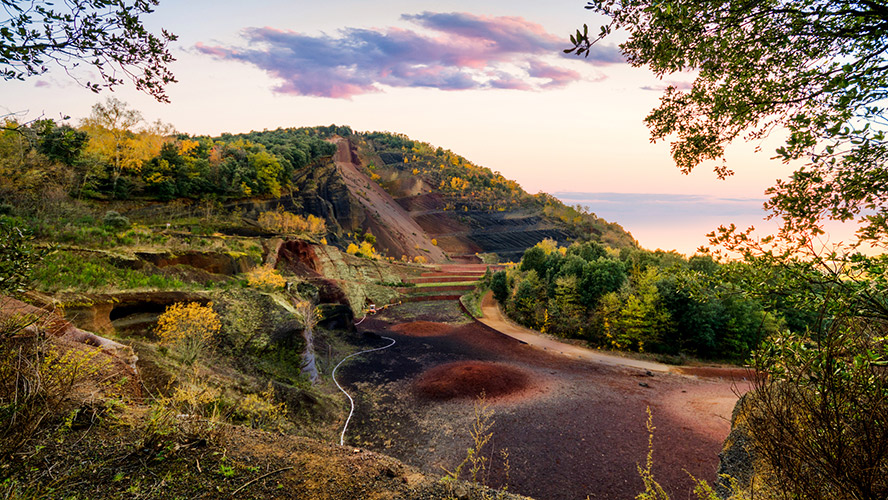
What to see in the surrounding area
The protected area of the Fageda d’en Jordà is barely five kilometres from Olot (link to the corresponding URL?), a town that is highly recommended for a visit. Above all for its striking collection of modernist buildings, including the Pujador, Escubós, Gaietà Vila, Solà-Morales, and Gassiot houses. This group also includes one of the historical side façades of the Church of Sant Esteve.
In addition, there are other areas of particular biological and geological importance in the area, such as the Fageda d’en Jordà, which are protected as part of the Garrotxa Volcanic Zone Natural Park. These include the Rocanegra Volcano, the Brugent Protected Area, with its natural pools that are so refreshing in summer as well as the Croscat, Monstsacopa, Sant Marc, and Puig Roig volcanoes. Each of them has its own particular physical characteristics but together they make up one of the most impressive landscapes in Girona and Catalonia.
As for the human side of things, a visit to nearby towns such as Besalú (link to the corresponding URL?), Batet de la Serra, or the old town of Sant Feliu de Pallerols is an absolute must. You can also visit the Romanesque complexes of Maià de Montcal and Beuda or the Vall de Bianya.

Recommendations for your visit
You can visit the Fageda d’en Jordà at any time of the year. In fact, each season has its own charm in this protected area. That said, you should come well prepared depending on the weather. So, in autumn (the best time of the year) and spring, especially if it’s very rainy, you should wear waterproof clothing and good watertight footwear. In winter, it’s best to dress warmly, as temperatures can drop below 0°C. In summer, protect yourself from the sun and bring plenty of water or liquids to avoid dehydration.
If you’re coming in your own vehicle or a rented one, there are two designated car parks from which you can start your visit: one is Can Serra and the other is Santa Margarida. There’s a fee payable for both of them.
Once you’re on your way along the Fageda trails, especially if you are travelling with children, it’s important to keep to the marked routes. For your safety and, above all, to ensure the care and preservation of this natural space. In this regard, and as a gesture of responsibility, the waste produced during your stay here can be placed in the rubbish bins near the entrances to the protected area.




































































